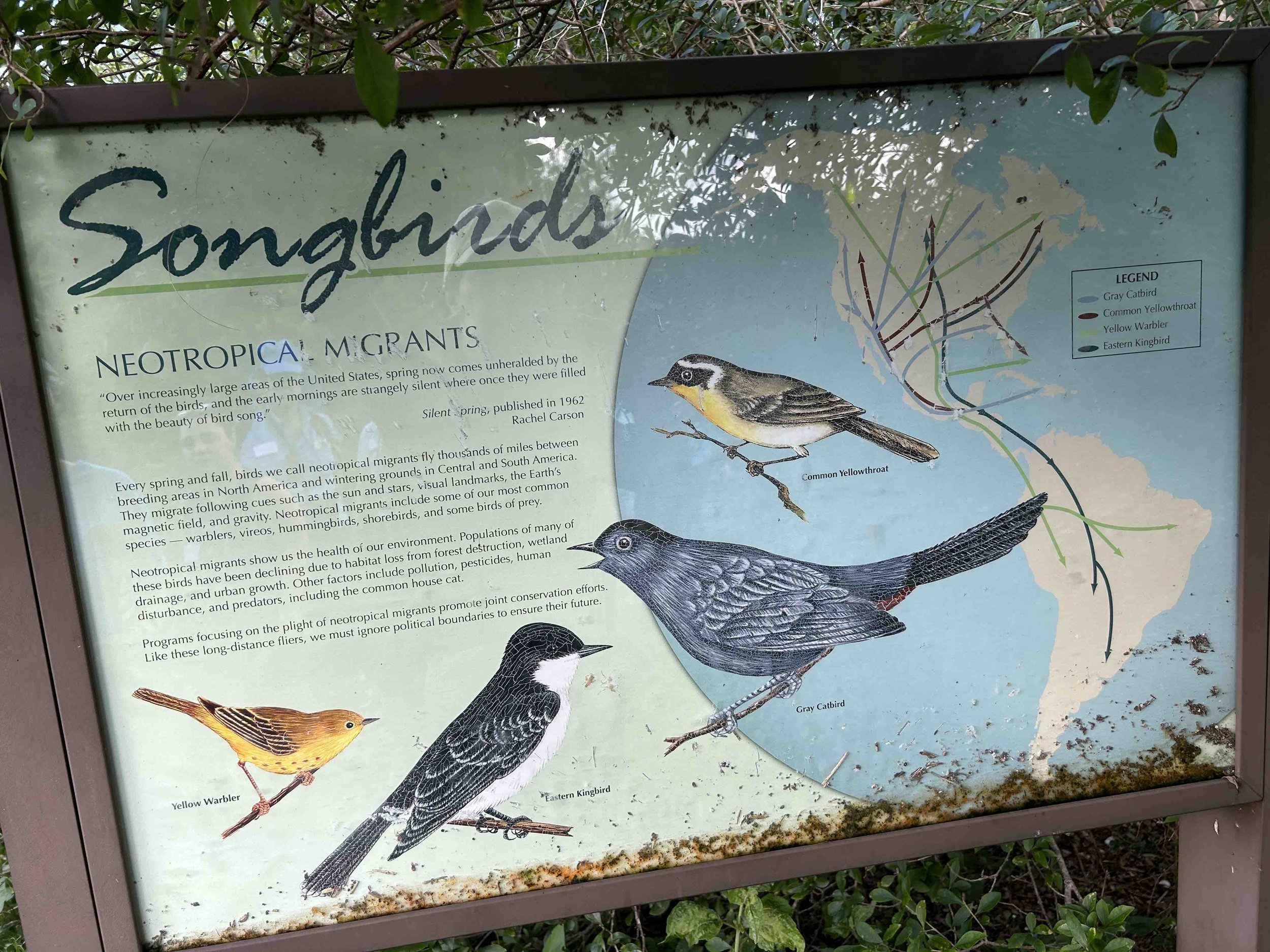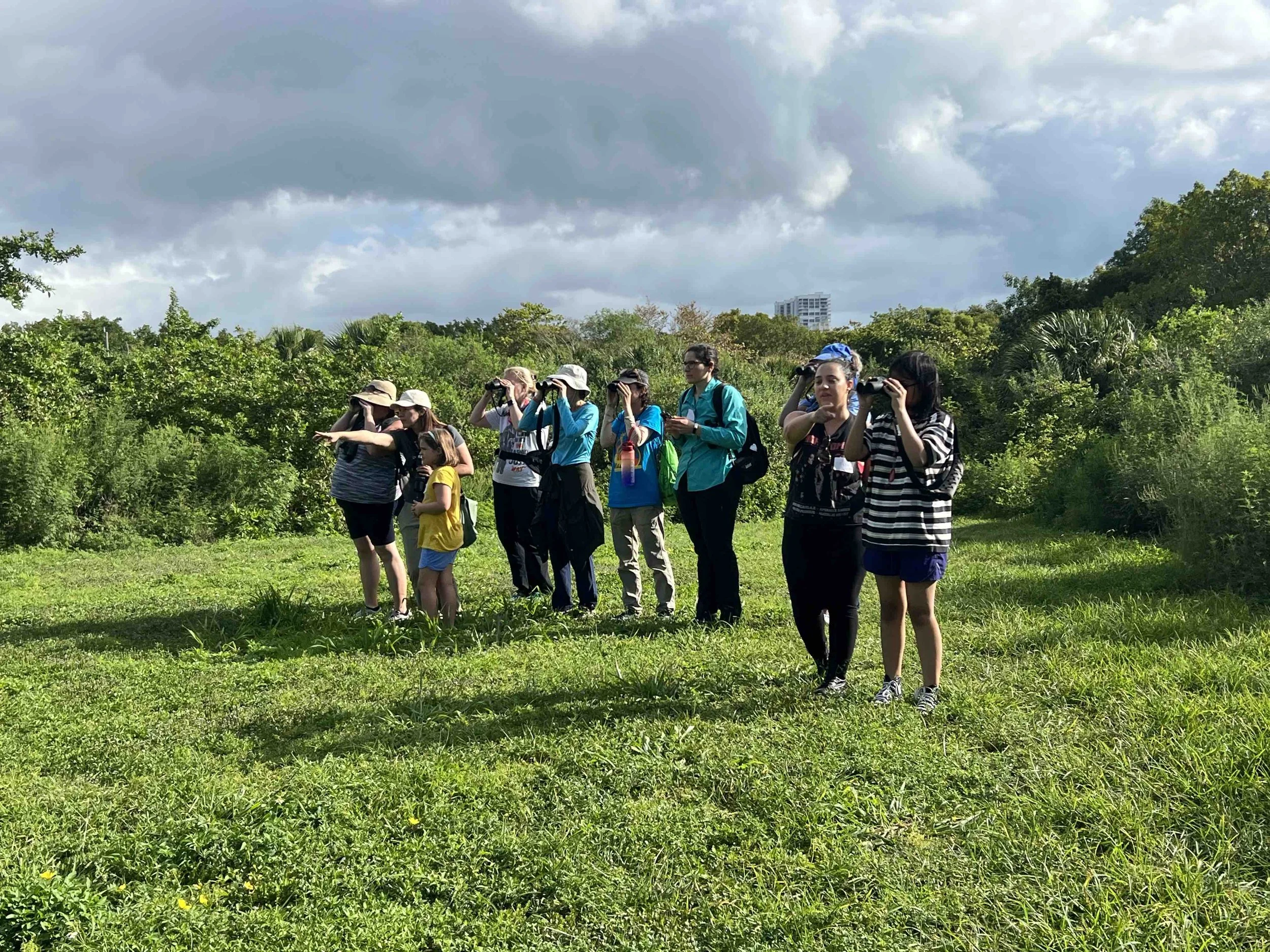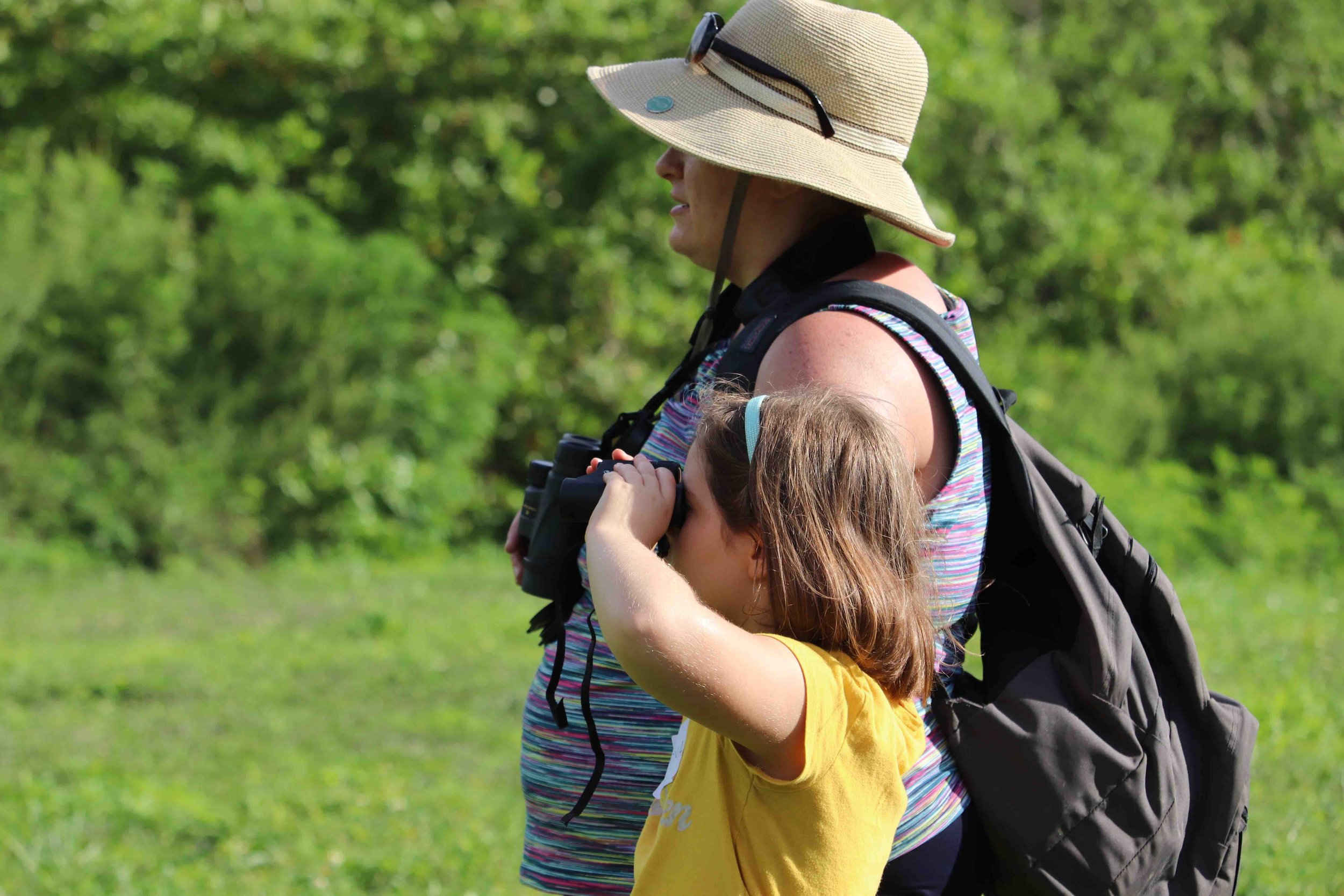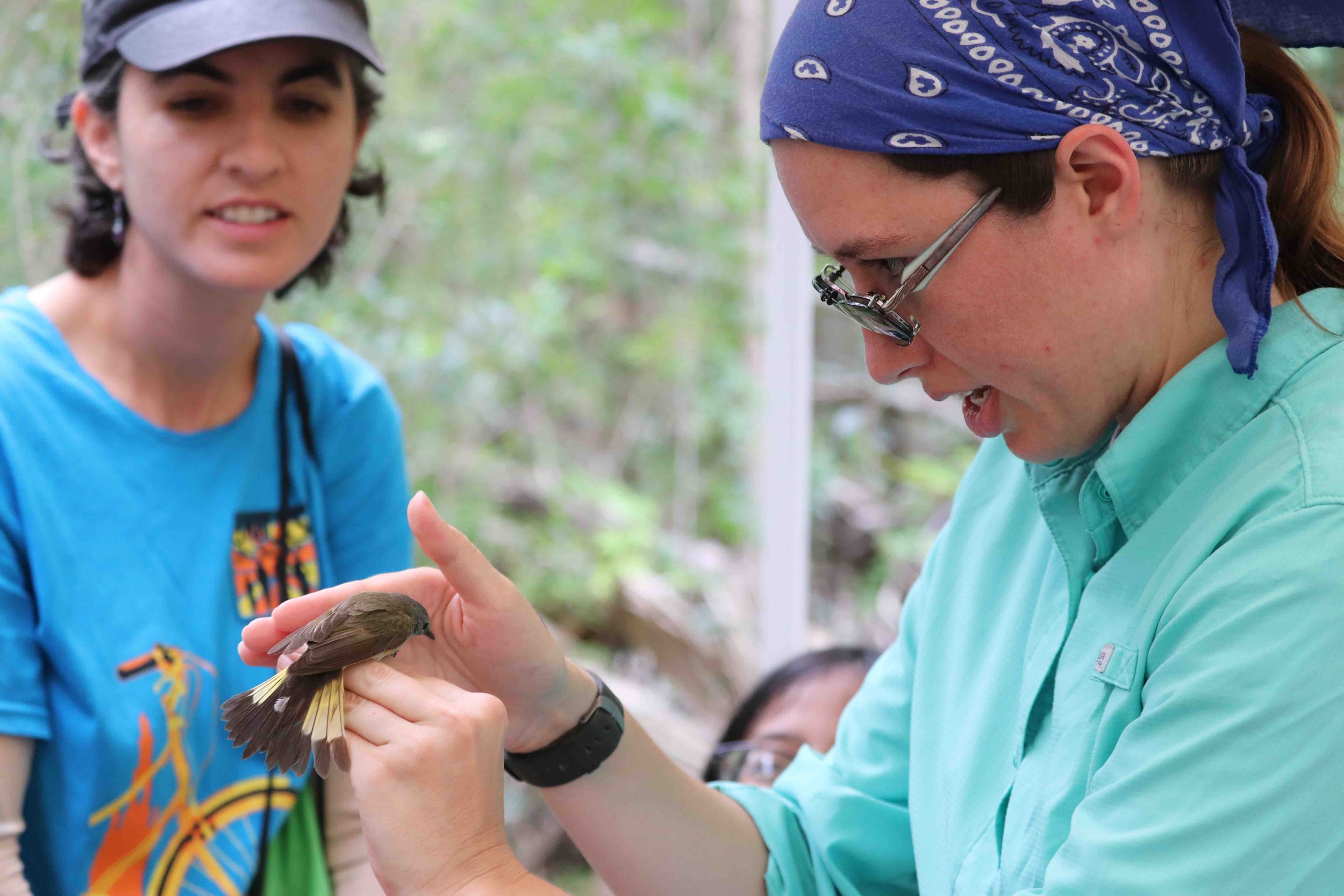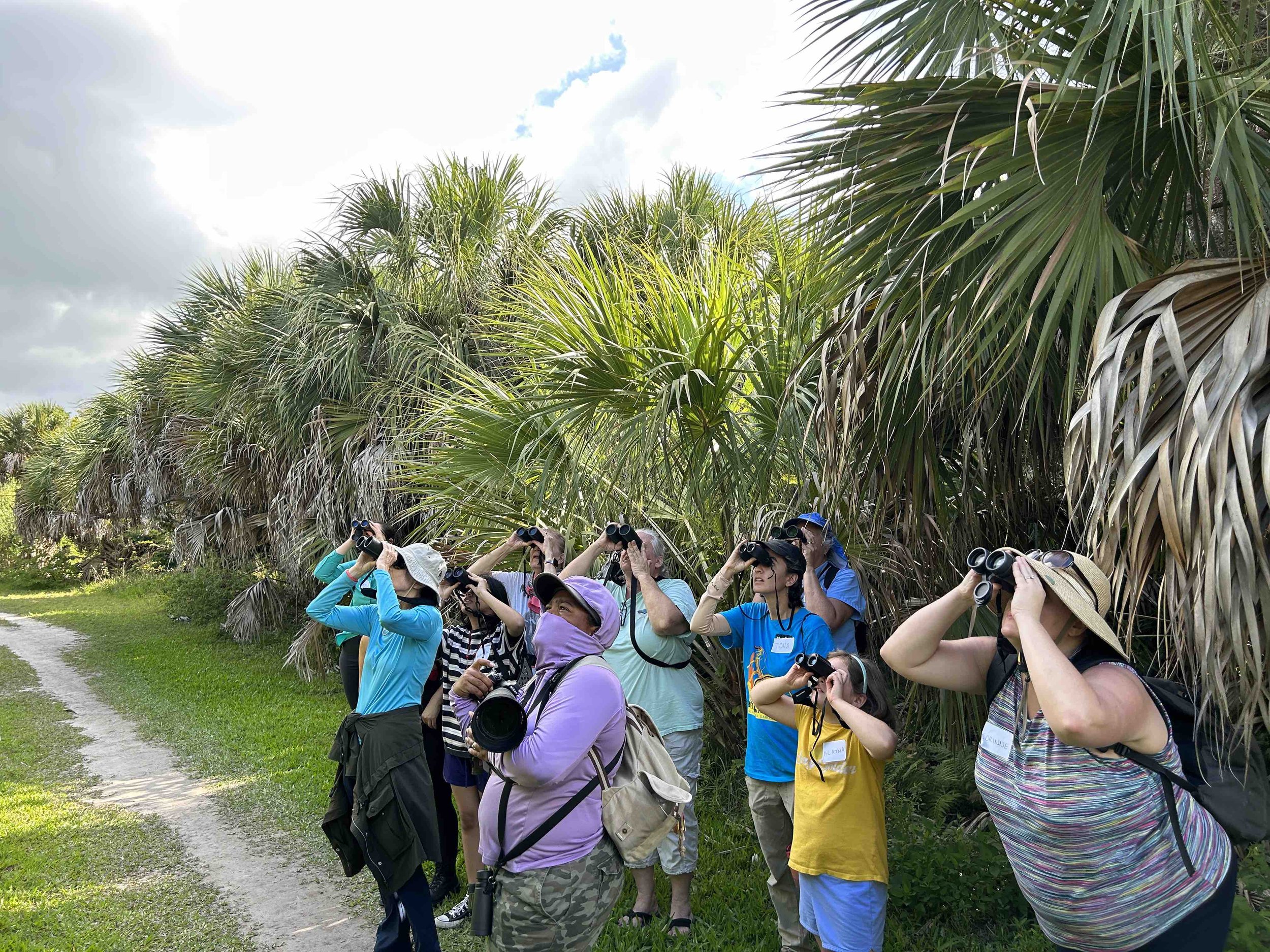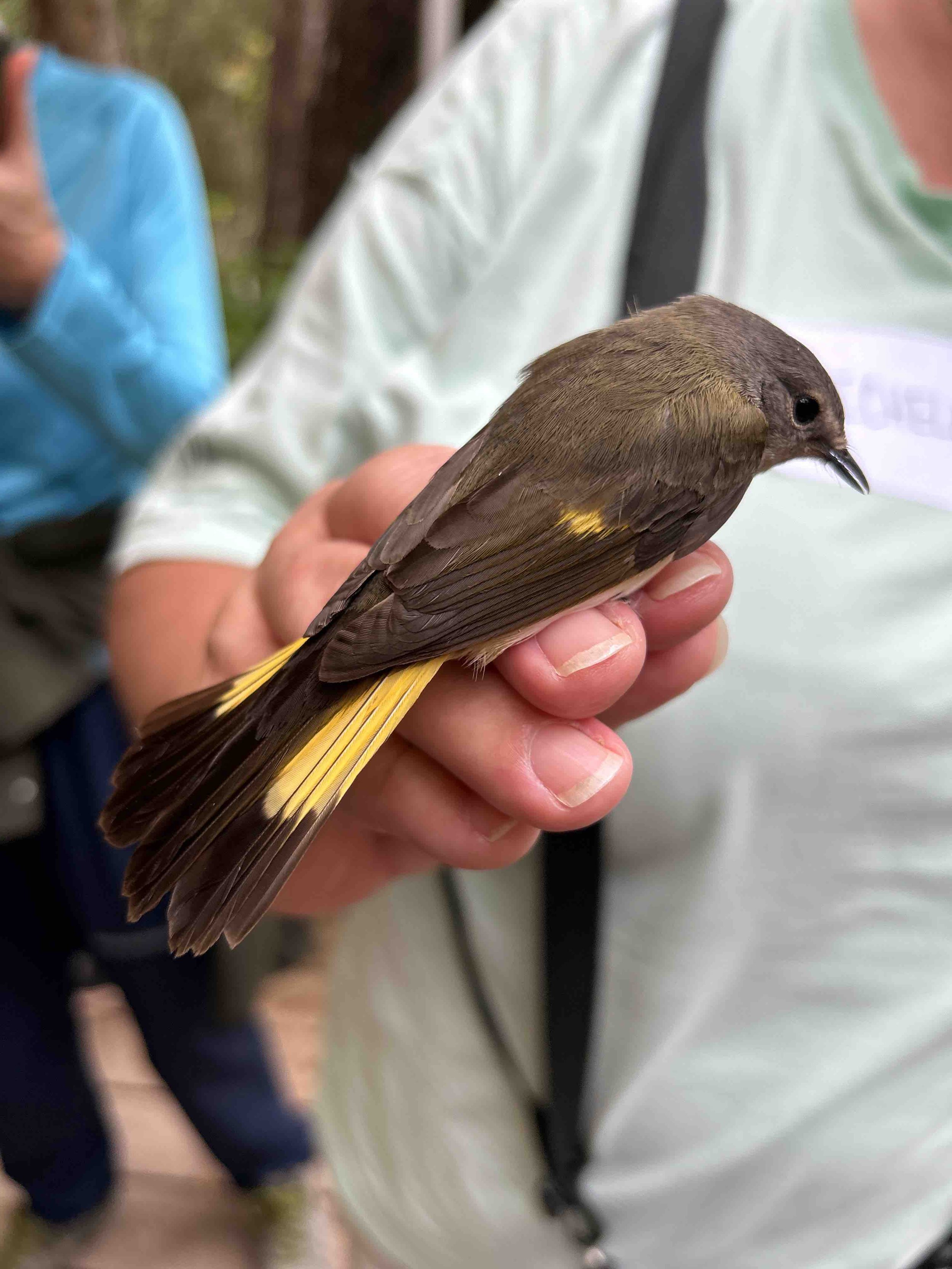Cape Florida Banding Station Field Trip
Sunday, May 7, 2023 • Bill Baggs Cape Florida State Park • Report by Michelle Davis • Images Courtesy of Ana Lima
A trained bird bander holds up a female Common Yellowthroat at the Cape Florida Banding Station shortly before releasing it into the wild.
Twelve women gathered at Bill Baggs Cape Florida State Park (BBCFSP) on the morning of May 7 to visit the Cape Florida Banding Station, the longest continually-running banding station in South Florida. This park is one of the best places in the area to witness spring migration, because the birds often land here to rest and forage after a night flight over the ocean. Eighteen species were observed, including birds banded at the station.
The weather was windy out of the East, which kept us cool and the mosquito count low, but it did make it a little more difficult to see the birds in the hardwood hammock as CFBS Director Michelle Davis led the group along the nature trail toward the banding station. A male Common Yellowthroat peeked up from a patch of weeds on the top of a mound in a clearing and delighted the Phoebes with his raccoon-like mask. Two female Cape May Warblers were drinking nectar from the buds of a Jamaican Dogwood along the trail, and we were able to talk about ways to tell some of the confusing female-plumaged warblers apart from each other. A few more birds were lurking on the section of the trail leading to the banding station.
At the banding station itself, the small group was treated to a morning spent in the banding tent with the volunteer bird banders where the Phoebes had an opportunity to see the birds being banded, up close.
Phoebes gather at the Cape Florida Banding Station for a walk and tour led by Banding Station Director Michelle Davis, (pictured third from left, back row, holding a banded bird shortly before releasing it to the wild).
At CFBS, soft mist nets are set up to safely collect migratory birds that fly through the area. The birds are gently extracted from the nets and placed individually into bags where they calmly await their turn to be banded and quickly released. Trained volunteers apply a small aluminum band with a unique number to each bird’s leg and then collect data about species, age, sex and physical condition. The entire process takes about one minute per bird, and then it is released to continue with its migration.
Volunteer bander and Phoebe Miriam Avello and volunteers Danny Fabelo, Michelle Unger, Rachel DiPietro, Eddy Ibarra and Madison Janney were working at the station and were able to demonstrate the entire banding process for the group.
It turned out to be a good day to observe birds being banded at the station. Volunteers extracted a steady stream of warblers from the nets, which were brought back to the banding tent where the group could get good looks at them and observe banding and data collection. We saw several young male American Redstarts in the hand, sporting random blotches of their incoming black plumage. Common Yellowthroats, Northern Waterthrushes, and Black-throated Blue Warblers made up the balance of the birds banded during our time at the station. These species are typically very abundant in the spring as they travel between the islands of the Caribbean and breeding grounds in the Northeastern US and Canada.
A trained bander holds up an American Redstart after it was banded and shortly before being released into the wild at the Cape Florida Banding Station.
The data collected at CFBS informs conservationists about many things such as distances traveled and how long birds can live. Birds banded in Cape Florida have been found as far away as Puerto Rico to the south and Newfoundland to the north. A resident Northern Cardinal lived to be 12 years old, and an Ovenbird returned to BBCFSP for 9 winters. The birds that we only see once or for a short time still give us information about the quality of the habitat for migrants and their ability to use the restored native habitat to refuel for the long flights ahead of them.
BIRDS WE SAW
https://ebird.org/checklist/S136560254
Rock Pigeon (Feral Pigeon)
Double-crested Cormorant
Great Blue Heron
Great Egret
White Ibis
Red-bellied Woodpecker
Merlin
Fish Crow
Common Grackle
Ovenbird
Worm-eating Warbler
Northern Waterthrush
Common Yellowthroat
American Redstart
Cape May Warbler
Northern Parula
Black-throated Blue Warbler
Northern Cardinal




